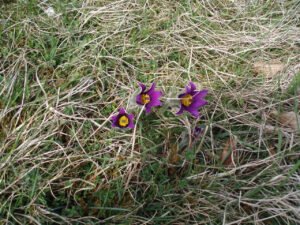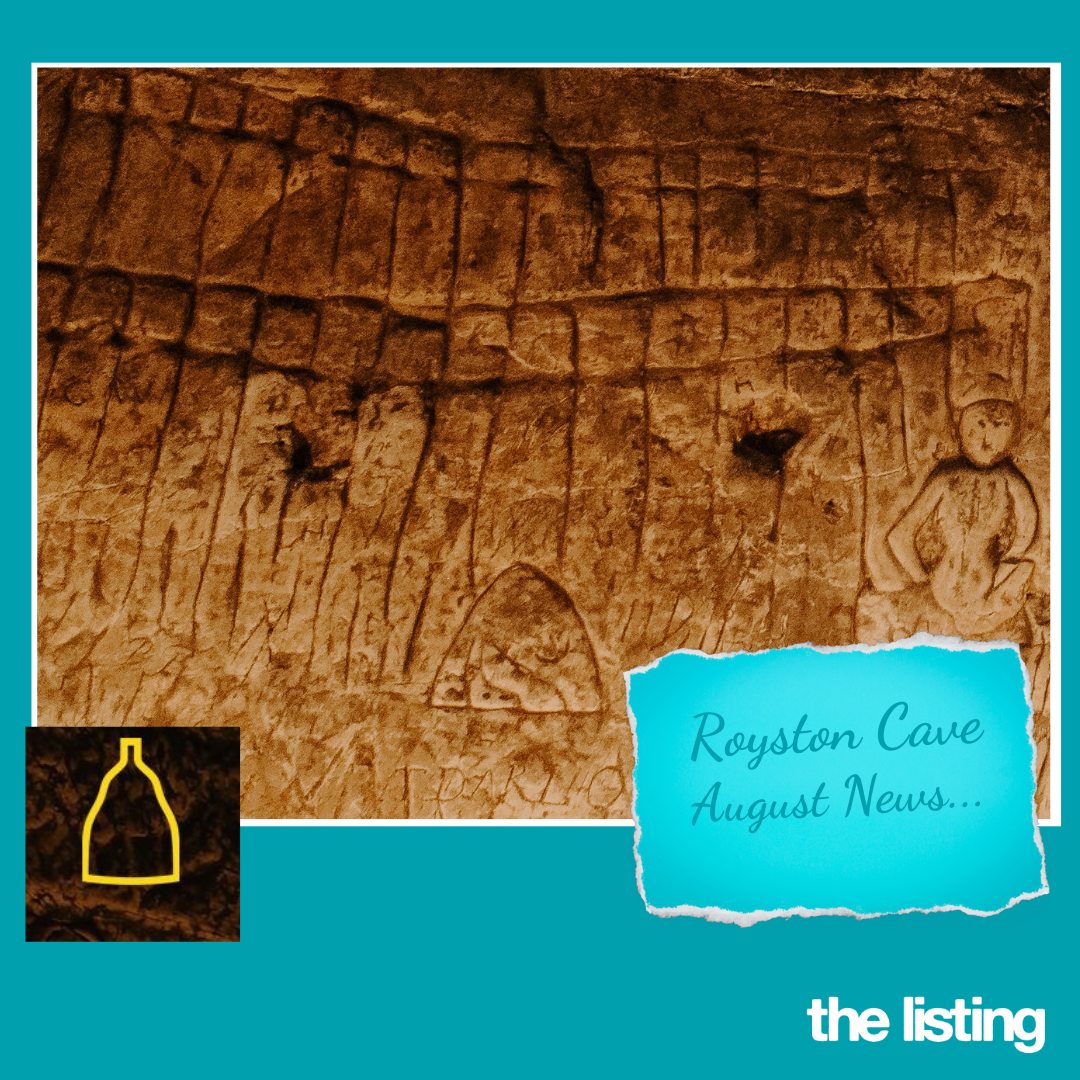 Spring is here, and with it the beautiful Pasque Flower blooms have arrived. Somewhat worryingly, the first flowering was reported in February this year; normally this would be well into March with the peak flowering in April and May. This is a sign of the warm winter we have had.
Spring is here, and with it the beautiful Pasque Flower blooms have arrived. Somewhat worryingly, the first flowering was reported in February this year; normally this would be well into March with the peak flowering in April and May. This is a sign of the warm winter we have had.
Pasque Flowers (Scientific name: Pulsatilla vulgaris) are now incredibly rare in the UK. The species is classified as ‘Vulnerable’ on the Vascular Plant Red Data List for Great Britain, ‘Priority Species’ under the UK Post-2010 Biodiversity Framework and ‘Near Threatened’ on the global IUCN Red List of Threatened Species. Therfield Heath is one of the 3 largest colonies with around 60,000 plants, which is roughly a quarter of the UK population. A site near Cirencester and another near Peterborough have similar populations. The final quarter is distributed over another 14 sites with much lower numbers.
This hardy plant, with distinctive purple flowers and golden stamen, loves sun-soaked, well-drained, chalk or limestone grassland. It doesn’t deal well with disturbance as they live for up to 70 years, although an individual plant does not flower every year. Much of Therfield Heath was ploughed during the Second World War to provide food; however, Church Hill, the site of the most impressive Pasque Flower bloom, was too steep to plough, which is why it remains an undisturbed and ideal habitat.
Although able to survive frost, snow, and thin soil which heats up rapidly in the sun, these flowers are easily outcompeted by grasses if soil depth becomes thicker. This means it is really important to keep the grass sward low, not allowing a lot of dead plant matter to remain, which would increase soil depth and encourage more common competitive grasses, and in turn scrub. One of the best tools for this is sheep grazing. Sheep graze grasses low to the ground, and in moderate density keep more competitive grasses in check, allowing the Pasque Flower to thrive. If sheep are not grazed then the slope has to be cut in the autumn with special equipment for the steep slope. Where scrub has started to encroach on the site, it is being removed by our volunteer groups to stop the Pasque Flowers from being shaded out. Sweet Briar, which is locally scarce, is left so as not to reduce the local population. Scrub is an important habitat, and a border will be left around the woodland to provide habitat diversity, without risking the future of these rare flowers.
In 1929 Sidney Harmer, director of the Natural History Museum at the time, urged Letchworth and District Naturalists’ Society to stop the picking of Pasque Flowers, a common practise at the time, as he feared their extinction. We hope you listen to his plea nearly 100 years in the future and help protect this special site. Please keep to the path across the top of Church Hill which we have marked with string and pegs, or the clear eroded path along the side of the hill to avoid treading on the Pasque Flowers. Thank you for helping us to protect this amazing place.
The Conservators of Therfield Heath and Greens – www.therfieldheath.org.uk














